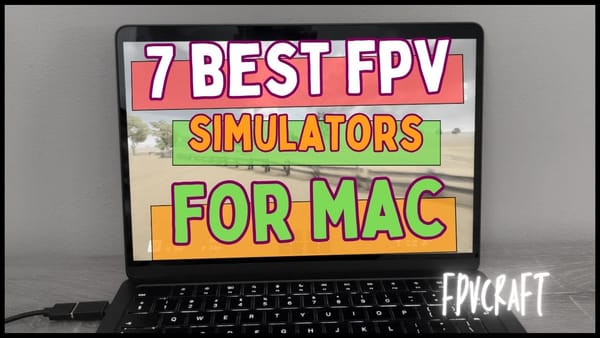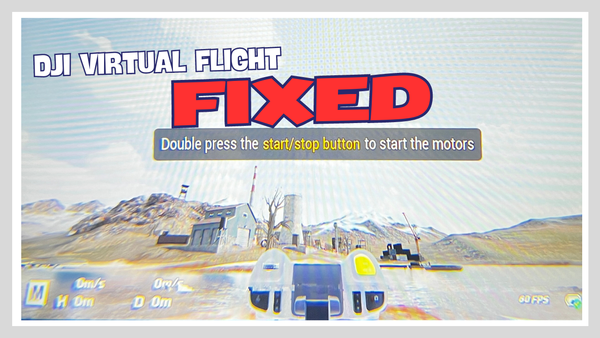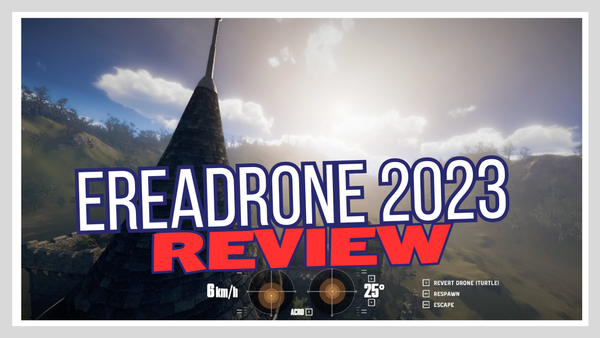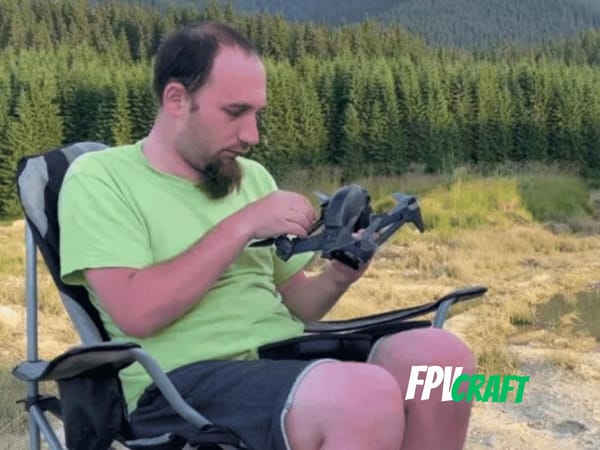DJI Avata vs. DJI FPV (In-Depth Comparison)
This is a complete review and comparison between the DJI Avata and DJI FPV and which one is worth buying.
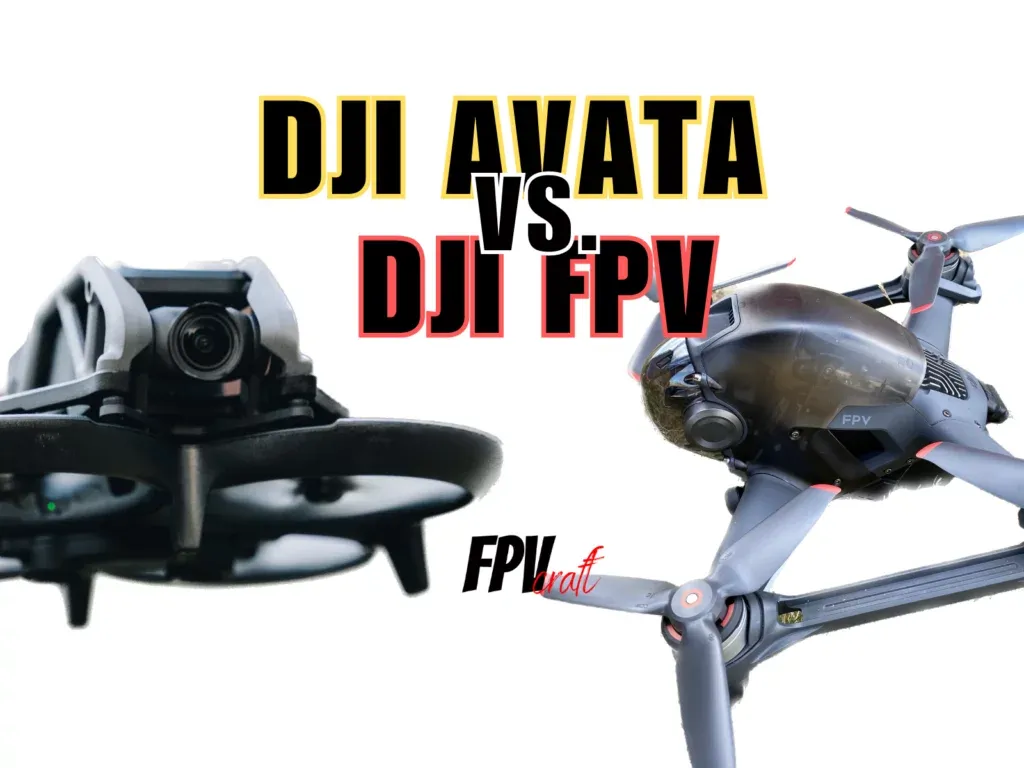
If you want to get into flying FPV drones, you may be thinking of DJI. There are only two such drones.
The older DJI FPV and the newer DJI Avata.
This article is an in-depth guide and comparison between DJI Avata and DJI FPV drones.
What is DJI FPV drone?
DJI FPV is the first FPV drone released by DJI in January 2021.
With the shaped potato form, many FPV drone pilots loved and hated this drone at the same time.
With the DJI introduction to an RTF FPV kit, the DJI FPV was the drone when many drone pilots started flying FPV.
The DJI FPV has extraordinary flying capabilities and can quickly fly long-range.
The camera is decent, although not the best in a drone, it is far superior compared to a custom FPV drone digital stock camera.
Reviews are sometimes mixed.
But leaving this aside, the DJI FPV drone is surprisingly fast, and compared to a custom FPV drone, the battery life is astonishing.
On top of that, we all know that the DJI FPV has not only Manual Mode but Normal and Sport Modes.
When bought as a kit, the DJI FPV drone comes with the DJI FPV Remote Controller 2 and the DJI FPV Goggles v2.
» READ MORE: DJI FPV Normal Mode vs. Sport Mode (explained)
✅ DJI FPV Pros
- The drone can reach high speeds when flying in manual mode.
- It can fly long-range without issues
- The battery life is fantastic for an FPV drone.
- It is responsive, and the image quality in goggles is more than decent.
- The latency is relatively low for a digital drone.
- It has good aerodynamics and can withstand strong winds.
- It can carry any GoPro or most action cameras.
❌ DJI FPV Cons
- Cannot fly at slow speeds and in close spaces
- It is heavy and bulky.
- The drone cannot withstand any type of impacts
- The camera quality is inferior to DJI Avata
- It is an older drone.
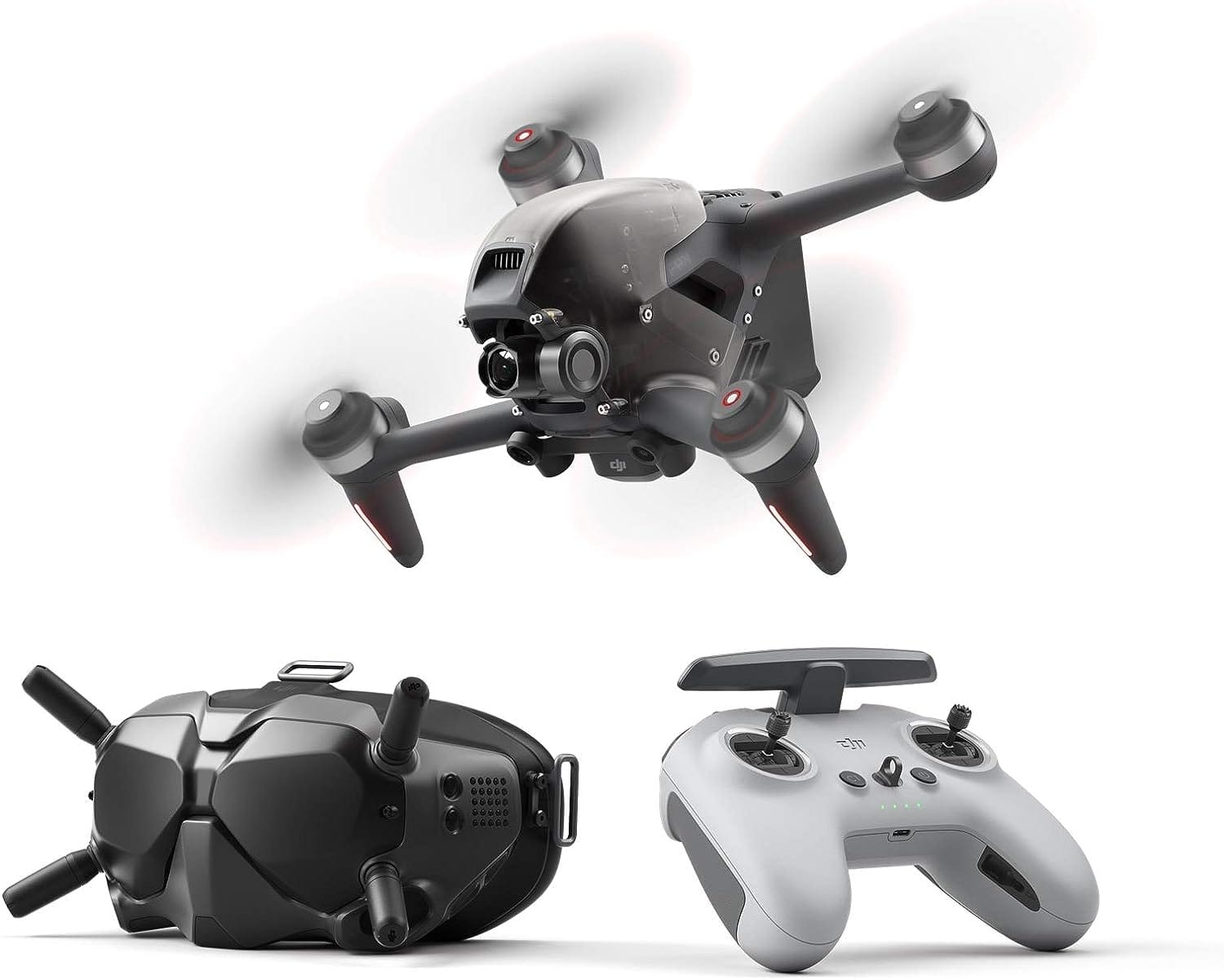
DJI FPV Drone
- IMMERSIVE FLIGHT EXPERIENCE
- 4K/60FPS VIDEO
- BRAND-NEW S MODE
- ADVANCED SAFETY FEATURES
- OCUSYNC 3.0 TRANSMISSION SYSTEM
This is an affiliate link. We earn a commission if you make a purchase, at no additional cost to you.
What is DJI Avata?
The DJI Avata is the newer FPV drone released by DJI, a “tiny” cinewhoop that was created for safer flights due to the permanent duct guards.
Moreover, with such a drone, you will have different types of flights than DJI FPV.
For instance, with a cinewhoop, you can fly closer to people, indoors, inside of a forest, and in places other drones cannot fly.
Moreover, the DJI Avata was created for flights at slower speeds. That’s why, although capable of long-range, the DJI Avata is made for short-range flights.
When you buy the DJI Avata as a kit, it comes in more options:
The goggles can be either DJI Goggles 2 or, newly, the DJI Integra. You can also buy with the older (but reasonable) DJI FPV Goggles v2, which is perfectly compatible with the Avata.
As a remote controller, same as DJI FPV, there’s only one and the same available: the DJI FPV Remote Controller 2. But unfortunately, there is no kit selling the drone with the remote controller.
Instead, the Avata kits have either the DJI Motion Controller 2 or DJI RC Motion 2.
Therefore, if you’re looking to fly the Avata at its full capabilities, you will have to acquire separately the DJI FPV Remote Controller 2.
✅ DJI Avata Pros
- Can fly slowly and close to people, objects, inside forests, etc., because of the duct guards (cinewhoop)
- It is very resistant to impacts
- The camera is perfect for filming and can record super slow motion in 2.7k
- It is lightweight and portable
- It can be flown with a motion controller
- It can fly for a decent amount of time with its batteries
- Many people upgraded the motors, giving a boost to performance.
❌ DJI Avata Cons
- It doesn’t come in a kit with the DJI FPV Remote Controller 2
- Bad wind resistance
- Can tumble easily
- It cannot reach high speeds and may struggle to fly long-range (even if it’s capable of doing so)
- The stock motors are relatively weak compared to many FPV drones.
- It is quite pricey as a kit.

DJI Avata Pro-View Combo (DJI Goggles 2)
- Experience the Thrill of Flying: Enjoy total immersion and intuitive control with DJI Avata. When you combine Avata with the goggles and motion controller, flight becomes accessible to all.
- DJI Avata also provides Ultra-Smooth 4K Footage
- Palm-Sized and Agile with DJI O3+ Video transmission
- Change the Way You Fly: DJI Avata is compatible with DJI Goggles 2, DJI FPV Goggles V2, DJI FPV Remote Control 2, and DJI Motion Control, which each unlock different possibilities.
- DJI Goggles 2 and DJI Motion Controller provide an immersive sensory experience with intuitive control by hand and head movements.
This is an affiliate link. We earn a commission if you make a purchase, at no additional cost to you.
Size, Weight, and Flight Speed
As an overview, the DJI FPV drone is larger and heavier but can reach much higher flight speeds than DJI Avata.
The DJI FPV is relatively large for an FPV drone. It weighs no less than 795 grams on takeoff, and without propellers, it is 178×232×127 mm.
The arms don’t fold, and neither the propellers. The drone dimension is fixed.
With such a heavy FPV drone, you will feel the weight then flying in manual mode, especially when recovering after a free fall.
But the DJI FPV has some powerful motors, which make the drone weight feel like a feather when throttling up.
The DJI FPV can reach a whopping speed of 39 m/s (87.2 mph or 140 km/h) in manual mode, 27 m/s (60 mph or 97 km/h) in sport mode, and 15 m/s (33.5 mph or 54 km/h) in normal mode.
Although not the fastest in its class, it is the fastest DJI drone existent.
DJI Avata is much smaller in size than the DJI FPV drone, at about 180x180x80 mm. It also weighs less, at about 410 grams on takeoff.
The DJI Avata can neither fold. The form factor is fixed and has no arms (instead, it has duct guards, which act as short arms).
Because of this, the DJI Avata can be easily carried in a backpack between clothes without stressing of bending propellers.
Compared to many custom FPV drones and to the DJI FPV, the factor motors from DJI Avata are weak.
The drone can reach a maximum speed of 27 m/s (60.3 mph or 97.2 km/h) in manual mode, 14 m/s (31.3 mph or 50.4 km/h) in sport mode, and 8 m/s (18 mph or 29 km/h) in normal mode.
It is understandable, and I agree with the fact that a cinewhoop needs to reach slow speeds.
But if you want to fly long-range with the Avata, you will struggle to reach very high speeds.
Camera Comparison
Overall, the DJI Avata has a better camera than the DJI FPV, with a larger sensor, a better dynamic range, and a clearer image.
Both drones have fantastic cameras that can film at a maximum resolution of 4k at 60 frames per second. But there are minor differences in CMOS sensor, image quality, dynamic range, and overall capabilities.
That’s why it is crucial to know before you want to buy any of these drones what you will use them for.
The DJI FPV drone has a 1/2.3″ CMOS with a fixed aperture of f/2.8.
It may not be the best camera for a drone. In fact, the camera sensor is below what we usually find in DJI drones.
But when we relate to film professionally, we may need more, such as adding an additional GoPro or action camera. But we’ll cover that later.
In the meantime, as DJI FPV can film 4k at 60 seconds, if you step down the resolution, you can film in 120 frames per second only at FHD.
That would be great if you’re looking for fantastic slow motion but not enough resolution if you want to record professionally.
From my experience, I can say that the dynamic range suffers a bit. You can (as I always) set the D-Cinelike color profile, which is what you need if you’re looking to further post-process the video.
Depending on what program you use to edit your videos, color grading may be better or worse.
I usually used Lumafusion on iPad to edit my videos and add some color grading to the ones resulting from the DJI FPV camera.
But for the sake of this article, I couldn’t manage to create a fantastic color profile to reflect well on the type of footage I recorded.
There are videos on YouTube where the recording from the DJI FPV drone, color graded, looked fantastically and far superior to mine.
However, let me share with you a short cinematic video I created from different recordings at 4k 60 frames per second and color graded in Lumafusion.
If you’re looking to photograph with the DJI FPV drone, look elsewhere. Neither DJI FPV nor Avata is not made for photography, and the image resulting is just a snapshot from the video resolution.
Now, the DJI FPV drone has Rocksteady. If you’re interested in reading about it, we have it covered
» READ MORE: Does DJI FPV Drone Have RockSteady and HorizonSteady?
What about DJI Avata?
The DJI Avata camera is far superior to the one found in DJI FPV.
Even the basic camera found in DJI Avata can be widely used for all sorts of professional projects. It is that good, indeed.
However, many FPV drone pilots are strict when using incorporated cameras, and they always prefer using a GoPro instead.
Now, the DJI Avata has a 1/1.7-inch CMOS that is larger compared to the one found in DJI FPV.
The aperture is the same one as found in DJI FPV, at f/2.8, and it is a fixed aperture.
When we relate to photography, we have a 4000×3000 resolution, which is a few percent larger than DJI FPV one, but by far doesn’t make a significant difference if you’re looking to photograph with DJI Avata.
Now, we are glad that DJI Avata also benefits from D-Cinelike, allowing us to better color-grade the videos.
The DJI Avata benefits from both HorizonSteady and Rocksteady functions.
The HorizonSteady is a type of electronic stabilization that will fix the horizon line to look straight into your videos if you incline the drone left or right.
In my opinion, if you’re the type of person to fly in manual mode, disable the HorizonSteady.
Now, Rocksteady is, in fact, an electronic image stabilization that will remove all the shakes and vibrations from propellers when flying.
The video results are smooth like silk.
It would be best always to have the Rocksteady enabled because it’s doing a fantastic job.
Okay. Another advantage of DJI Avata over DJI FPV is that although this drone is capable of recording at 4k with 60 frames per second if you drop down to 2.7k, you can film at 120 frames per second.
In this case, the resolution and framerate of the DJI Avata camera are superior to the one found in DJI FPV.
Flight Time
As an overview, the DJI FPV drone has a slightly longer flight time than the DJI Avata, both in normal or manual mode.
In the FPV world, we barely get a few minutes of flight time with a custom FPV drone and a Lipo battery.
This is a significant downside, but not concerning DJI FPV and DJI Avata.
Both these DJI drones can have longer flight times, even when flying in manual mode.
Let’s get a bit in detail, shall we?
But before that, let me share the following article with you.
» READ MORE: How Long Can an FPV Drone Fly?
The DJI FPV drone has a longer flight time than the DJI Avata.
DJI advertises that this drone can fly for up to 20 minutes.
But in reality, the flight time is a bit less.
I could never obtain more than 12 minutes when flying in manual mode and about 15 minutes in normal mode.
Even like this, 12 minutes when flying an FPV drone in manual (acro) mode is fantastic and far superior to nearly any custom FPV drone existent.
Here I wrote yet another article covering in detail the DJI FPV flight time if you’re looking for a light read.
» READ MORE: How Long Can DJI FPV Fly?
When flying the DJI FPV in normal mode (and sport mode), we are able to obtain a few more minutes of flight time than flying in manual mode.
This mostly relates to the motor’s power being heavily limited. The speed is drastically reduced when flying in normal mode than in manual mode.
Without getting too much into detail, the DJI FPV can fly up to 15 m/s in normal mode and 39 m/s in manual mode, which is close to tripe.
The motors are the main consumers of a drone. Reaching a higher speed will always drain more juice from the battery.
Now, the battery found in DJI FPV is a 2000mAh capacity LiPo 6s (6-cell) and weighs close to 300 grams.
These are heavy and large batteries holding a lot of juice inside. The standard discharge rate is 10C.
The DJI Avata can fly for just a little less than the DJI FPV, and it advertises at a maximum of 18 minutes.
Now, of course, same as with any drone, the flight time will be much less, and you should not expect more than 10 minutes of flight time in manual mode unless you want to drain the battery to zero, which I wouldn’t ever recommend.
The battery found in DJI Avata is a 4s (4-cell) Li-ion battery with a capacity of 2420 mAh, and the standard discharge rate is equivalent to 7C. The battery weighs only 162 grams.
From what we understand, the power this battery gives to the drone is much lower in equivalency than the one from DJI FPV.
The motors on the DJI Avata are much weaker than the ones found in DJI FPV, and the drone is made for slow types of flights.
As well as with the DJI FPV, if you fly the Avata in normal mode, you will have a bit more flight time than in the manual mode; the same principles apply.
Flight Range
DJI FPV can fly farther than the DJI Avata, both considering transmission range and flying based on battery life.
DJI is fantastic with creating drones capable of long-range flight, both FPV and non-FPV drones.
The DJI FPV was created for long-range flights and can fly miles away while maintaining a strong video connection to the goggles.
I never had an issue with the controller losing connection with the drone, not unless the video goes out first.
The range of the DJI FPV is up to 16.8 km (10.4 miles), but you should expect to fly the DJI FPV for about a maximum of 4km (2.5 miles) or a bit more if you live outside Europe (due to limited transmission power) until the battery is entirely drain (with returning the drone back).
In most case scenarios, this should be more than enough when we’re looking to use the DJI FPV for long-range flights.
It is mostly never about how powerful the transmission range is, as it is about how far the battery lets you fly.
Here I have another article covering everything you need to know about the DJI FPV range.
» READ MORE: How Far Can You Fly the DJI FPV Drone?
The DJI Avata has a slighter lower flight range than the DJI FPV drone.
According to DJI, the max distance DJI Avata can fly is 11.6km (7.2 miles). Even like this, the DJI Avata can fly long-range, but I wouldn’t recommend it due to a few issues it has.
One of them would be that the drone has insufficient wind resistance. The higher winds can quickly tumble the drone over and can crash it.
I have seen YouTube videos where the drone was flown in moderate winds, and it was just unable to fly at all.
But we will cover it more in the following section.
On the other side, both video and radio transmission are fantastic on the DJI Avata.
Overall, the DJI FPV drone can fly farther and is made for long-range flights than the DJI Avata.
When we look at both drones, there are geopolitical restrictions in place where the power is much limited in many countries and territories around the world, including the entire Europe.
Because of lower transmission power, the drone flight range is much lower. The USA has fewer restrictions than this.
Moreover, it is never a good idea to fly an FPV drone out of range. Although both of them have a return-to-home function and emergency break, it is against most drone laws to fly as far.
There comes into place other elements that can limit your flight range, such as interferences, wind, temperature, altitude, and even your own flight style and current position and orientation.
Wind Resistance
DJI Avata has very poor wind resistance and can tumble in high winds. At the same time, DJI FPV is a king drone when flying in harsh weather conditions, especially in manual mode.
The ability of a drone to fly in high winds can depend on many factors.
But what keeps a drone in the air stable in winds and allows it to fly well is mainly related to aerodynamics.
The DJI FPV is potato-shaped, and its aerodynamics is one of the most unique found in any FPV drone.
Because of the current shape it has, the drone is competent in resisting higher winds.
Although DJI advertises the DJI FPV wind resistance of up to 49 km/h (31 miles per hour or 13.6 m/s), this drone can withstand higher winds.
And when flying in manual mode (acro mode), an FPV drone can fly in much stronger winds than any regular drone requiring auto stabilization.
The drone’s size and weight also contribute a lot to its wind resistance (smaller body and heavier)
I would recommend you have a look over the following article:
» READ MORE: DJI FPV Wind Resistance (explained)
The DJI advertises for DJI Avata that it can withstand winds of up to 10.7 m/s which is lower than the DJI FPV wind resistance.
But in reality, with DJI Avata, it is another story.
The DJI Avata has the battery like a tower above the drone, which resulted in a poor center of gravity.
This makes when flying the drone and taking sharp corners and as well in high winds to tumble over and possibly crash.
There have been many reports related to this.
That’s why I would never recommend flying DJI Avata in high winds.
Moreover, Avata doesn’t have good aerodynamics, and the fact that it’s a cinewhoop with duct guards, there’s a lot of induced air friction.
Because of the air friction, the drone will resist less in high winds.
» READ MORE: What is the DJI Avata Wind Resistance?
Crash Resistance
As an overview, the DJI FPV has poor resistance to crashes, and most likely, the arms will break, whereas DJI Avata is quite resilient in crashes.
If you crash your DJI FPV drone, the chance that it will survive is minimal.
The drone is too heavy, and the arms are too poorly fabricated to support any type of impact.
Many custom FPV drones have carbon fiber arms, and they usually survive in minor or moderate impacts or crashes.
But not the DJI FPV drone. Unfortunately, the arms won’t resist any sort of impact.
There are arm bracers sold separately that will connect the front with the back arms, increasing the resistance of the drone in case of crashes.

DJI FPV Drone Arm Bracers
- Easy to assemble and disassemble, the DJI FPV Drone Arm Bracers effectively enhance drone arm strength and reduce the risk of drone arm damage.
This is an affiliate link. We earn a commission if you make a purchase, at no additional cost to you.
However, although it is a good addition to the DJI FPV, there’s no guarantee your drone will survive a direct impact.
The DJI Avata is another story.
This drone is firm and can withstand most impacts. The drone and duct guards are very resistant to collisions and impacts.
If you are new to flying FPV drones and are looking for a drone that won’t need to be sent to repair on an impact, the DJI Avata is a perfect choice.
Avata is also lightweight compared to DJI FPV, contributing to the ability to resist crashes better.
Can DJI Avata or DJI FPV carry GoPro?
Just as an overview, the DJI FPV drone is capable of carrying even a full size GoPro, whereas DJI Avata will struggle with stability (high chance of tumbling) when attaching even a smaller sized action camera.
Because of the DJI FPV drone’s motor strength, it can carry even a full-size GoPro.
The only disadvantage is the mounting part, which can be daunting, and you may need 3D-printed specific components.
What I found on Amazon is not resistant at all, and sometimes, it can even crack from vibrations.
But if you manage somehow to add a GoPro to the DJI FPV drone, that’s a beautiful thing.
The drone’s gravity center should remain stable (minimal risk of tumbling), it has enough power to lift it and still benefit from a decent flight time, and it would be a massive improvement in video quality.
But if you’re looking to add a GoPro to DJI Avata, you’re going to be a disappointment.
You can add a GoPro “Naked/Bones,” and that may be okay, but you will struggle to connect power to it.
Instead, a GoPro Mini can be carried by DJI Avata. But do you remember the bad center of gravity the drone has? Now just got worse, and the chances to tumble increased exponentially.
Please never attach a full-size GoPro to DJI Avata. I don’t say the drone cannot lift the GoPro.
But in this case, even changing directions can trigger a tumble of the drone, which the chances to recover are nearly zero.
Shortly? You surely will crash Avata to the ground.
Which is safer to fly?
I am going to give you a quick answer here.
DJI Avata is a very safe FPV drone to fly, whereas the DJI FPV can harm someone badly on impact.
Generally, no drone is safe to fly, in special FPV drones, that can be dangerous if flown without proper experience and training in flying FPV drones.
But I can say that the DJI Avata is a really safe drone to fly because it has duct guards.
In the worst-case scenario where you hit someone or an object with the drone, both the drone and the impact point will be protected by duct guards.
The damages resulting can be minimal or nearly non-existent.
That’s DJI Avata, and it is very recommended to start with if you’re new to FPV drones but have some challenges in mind.
In this situation, the DJI FPV would be the worst choice. The propellers are exposed and can severely harm a person.
Not to mention, the drone is heavy, and the impact can be major.
I would recommend using the DJI FPV only for flights without human presence or other structures involved.
Can DJI FPV or DJI Avata freestyle?
As an overview, the DJI FPV drone is suitable to freestyle with but bad at impacts, whereas DJI Avata can resist crashes but is terrible to freestyle with.
DJI FPV is a decent drone you can freestyle with.
The downside is that if you impact the drone, it’s game over.
But the good side is that the drone can be quite responsive; it won’t tumble over and can perform most freestyle tricks without any issues.
I had personally done a bit of freestyle with my DJI FPV drone but didn’t risk much for this reason.
If you want to have a look, I have covered as much as possible in an article about DJI FPV Freestyle.
Although the DJI Avata is more resistant to impacts, it is unsuitable for freestyle. You will have a bad experience with it.
It has some prop wash if you do dives; the duct guards induce a lot of air friction and can quickly tumble because of the bad gravity center of the drone.
You can try and perform a few smooth freestyle tricks where you risk less to tumble the drone, but because of it and also because it’s a cinewhoop, the DJI Avata is unsuitable for freestyle.
Why choose DJI Avata?
If I have to do it again, I would personally choose the DJI Avata for slow exploring with the drone and flying at slow speeds, if I am a beginner in FPV or I’m looking for something with good filming qualities.
The DJI Avata is also excellent for different types of commercial jobs (e.g., filming a bowling alley)
Why choose DJI FPV?
I will personally choose the DJI FPV drone again only if I am looking for an FPV drone capable of long-range flights, diving mountains, waterfalls, and valleys, flying above forests, and challenging the elements of nature.
The DJI FPV drone is also a good host for an action camera that can record any type of cinematic flight at a professional-quality grade.
» READ MORE: Tips to Consider Before Your First DJI FPV Manual Flight

